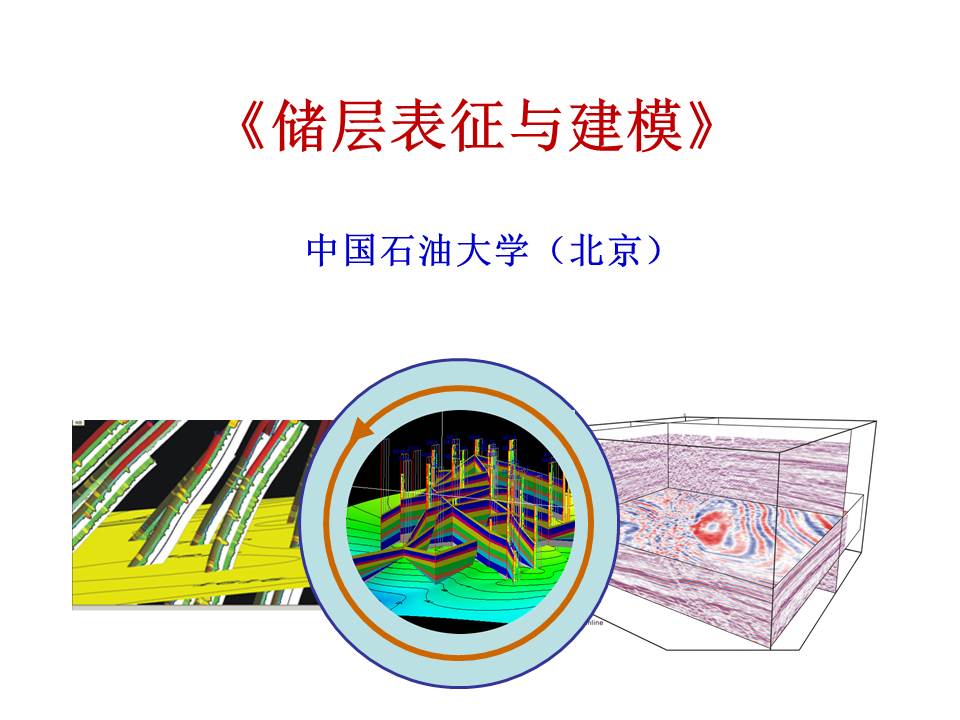
当前课程知识点:Fundamentals of Inorganic Materials Science > 4 Melt and glass > 4.4 The formation of glass > 4.4.1 The formation of glass_kinetics conditions
返回《Fundamentals of Inorganic Materials Science》慕课在线视频课程列表
返回《Fundamentals of Inorganic Materials Science》慕课在线视频列表
同学们好,
今天我们来学习玻璃的形成条件。
玻璃一般是由高温熔体通过急速冷却得到得到的。
因此我们从高温熔体冷却时发生的现象
来分析玻璃的形成条件。
从动力学的角度来分析,
主要有两个观点来说明形成玻璃的条件。
第一个观点是塔曼观点,
塔曼观点是从熔体冷却析晶的速率角度考虑玻璃的形成,
熔体难于析晶则易于形成玻璃。
熔体析晶包括两个过程:
成核和生长。
两个过程的发生均需要过冷度,
即析晶温度要低于熔点温度,
两者的差值即为过冷度。
在一定过冷度下,
熔体中部分质点凝聚形成固态小晶胚,
同时周围原子进一步向晶胚跃迁
使其尺寸长大变为稳定的晶核。
这一过程称为成核。
当形成一定数量的晶核后,
随着时间的延长,
熔体中的质点会进一步向晶核迁移,
并按照晶格结构重新排列,
实现液态质点向固态质点的转变。
进而使晶体的尺寸不断长大,
这一过程称为生长。
熔体的析晶速率则取决于这两过程的速率。
其中成核速率受两个过程控制,
晶胚的生长速率和原子的跃迁速率。
过冷度越大,
越容易形成晶胚,
但原子的跃迁变得越困难。
因此,
Therefore,
成核速率Iv随过冷度的变化曲线上存在极大值。
同样的,
在晶体生长阶段,
过冷度越大,
液态质点转变为固态质点的速率越快,
但质点的迁移速度越慢。
因此,
生长速率u随过冷度的变化曲线上也存在极大值。
而熔体的总析晶速率
是两者的叠加,
只有两者的速率都比较高时,
才具有较高的析晶速率。
换而言之,
在Iv和u两条曲线的重叠区内,
熔体具有较大的析晶速率,
这个区域称之为析晶区。
析晶区越大,
说明熔体越容易析晶而不易形成玻璃。
因此,
如果希望从熔体形成玻璃,
则需要选择析晶区小的熔体系统。
析晶区的大小由熔体系统的本性决定。
这就是塔曼观点。
但是从生产实际出发,
只要冷却速率足够快,
任何材料都可以形成玻璃。
那么确定形成玻璃需要的临界冷却速率
就显得非常重要。
这就是第二个观点,乌尔曼观点所讨论的问题。
该观点认为,
只要玻璃中存在的晶体体积
小于仪器的检测下限,
则认为制品为玻璃。
一般认为检出下限为10-6。
同时,
由析晶理论可知,
析晶体积分数与成核速率、
生长速率、时间的关系
可用如下公式表示。
而成核速率和生长速率都和过冷度有关。
因此,
以时间为横坐标,
过冷度为纵坐标,
可以确定生成含量为10-6的晶体时
对应的时间和过冷度。
这条曲线称为3T曲线,
即时间-温度-转变曲线。
由于成核速率和生长速率
随过冷度的变化曲线上存在极大值,
导致3T曲线弯曲且出现头部突出点,
该点称为鼻尖点,
该曲线也称为鼻尖曲线。
那么如何根据3T曲线确定临界冷却速率呢?
可以过3T图中的坐标原点
做3T曲线鼻尖点的切线,
切线的斜率就是冷却速率,
只要实际冷却速率小于该临界值,
就一定可以形成玻璃。
同时,
临界冷却速率越小,
表明熔体越容易形成玻璃。
这里给大家留一个思考题,
分析一下这三条3T曲线中哪一个较易析晶,
哪一个较易形成玻璃。
与塔曼观点中析晶区的大小一样,
形成玻璃的临界冷却速率也由熔体的组成决定。
从这张表中我们可以看出,
临界冷却速率越小的熔体,
熔点时的黏度越高,
同时玻璃形成温度
与熔点温度的比值接近2/3。
这也是判断熔体是否容易形成玻璃的另外两个判据:
熔点时的黏度高,
易形成玻璃;
玻璃形成温度与熔点温度的比值大于2/3,
易形成玻璃。
总结一下,
玻璃形成的动力学条件可以从四个角度分析:
析晶区大小、临界冷却速率、
2/3规则,熔点时的黏度。
-Test for chapter 1
-2.1 Type of defect
-2.2.1 The expression methods of point defects
--2.2.1 The expression methods of point defects
--2.2.1 The expression methods of point defects
-2.2.2 The rules for writing of defect reaction equation
--2.2.2 The rules for writing of defect reaction equation
--2.2.2 The rules for writing of defect reaction equation
-2.3 Calculation of thermal defect concentration
--2.3 Calculation of thermal defect concentration
--2.3 Calculation of thermal defect concentration
-2.4 Non-stoichiometric compounds
--2.4 Non-stoichiometric compounds
--2.4 Non-stoichiometric compounds
-Homework for chapter 2
-Test for chapter 2
-3.1 The classification of solid solutions
--3.1 The classification of solid solutions
--3.1 The classification of solid solutions
-3.2 Substitutional solid solution
--3.2 Substitutional solid solution
--3.2 Substitutional solid solution
-3.3 Interstitial solid solution
--3.3 Interstitial solid solution
--3.3 Interstitial solid solution
-3.4 The research method of solid solutions
--3.4 The research method of solid solutions
--3.4 The research method of solid solutions
-3.5 Questions for crystal imperfection and solid solution
--Questions for crystal imperfection and solid solution
-Homework for chapter 3
-Test for chapter 3
-4.1 Melt structure
-4.2 The properties of the melt
--4.2.1 The properties of the melt_viscosity
--4.2.2 The properties of the melt_surface tension
--4.2 The properties of the melt
-4.3 The characteristics of glass
--4.3 The characteristics of glass
--4.3 The characteristics of glass
-4.4 The formation of glass
--4.4.1 The formation of glass_kinetics conditions
--4.4.2 The formation of glass_crystal chemical conditions
-4.5 The structure of glass
-4.6 The typical glass
-4.7 Questions for melt and glass
--Questions for melt and glass
-Test for chapter 4
-5.1 Phase equilibrium in silicate systems
--5.1 Phase equilibrium in silicate system
--5.1 Phase equilibrium in silicate system
-5.2 One-component system phase diagram
--5.2 One-component system phase diagram
--5.2 One-component system phase diagram
-5.3 Applications of one-component diagrams
--5.3 Applications of one-component diagrams
--5.3 Applications of one-component diagrams
-5.4 Binary diagrams
--5.4.1 Binary diagram with eutectic point
--5.4.2 Binary system with a congruent melting compound and one with an incongruent melting compound
--5.4.3 Other five types of phase diagrams of binary systems
-5.5 Applications of binary phase diagrams
--5.5 Applications of binary phase diagrams
--5.5 Applications of binary phase diagrams
-5.6 Ternary diagrams
--5.6.1 Representation of ternary system composition
--5.6.1 Representation of ternary system composition
--5.6.2 Three-dimensional state diagram and plane projection diagram of a simple ternary system
--5.6.2 Three-dimensional state diagram and plane projection diagram of a simple ternary system
--5.6.3 (1) Basic types of ternary phase diagrams
--5.6.3 (2) Basic types of ternary phase diagrams
--5.6.3 (3) Basic types of ternary phase diagrams
--5.6.3 Basic types of ternary phase diagrams
-5.7 Applications of ternary phase diagrams
--5.7 Applications of ternary phase diagrams
--5.7 Applications of ternary phase diagrams
-5.8 Research methods of phase equilibrium
--5.8 Research methods of phase equilibrium
--5.8 Research methods of phase equilibrium
-5.9 Questions for phase equilibria
--Questions for phase equilibria
-Homework for chaper 5
-Test for chapter 5
-6.1 Overview of diffusion
-6.2 The kinetic equations of diffusion
--6.2 The kinetic equations of diffusion
--6.2 The kinetic equations of diffusion
-6.3 The thermodynamic equation of diffusion
--6.3 The thermodynamic equation of diffusion
--6.3 The thermodynamic equation of diffusion
-6.4 Diffusion mechanisms and diffusion coefficient
--6.4 Diffusion mechanisms and diffusion coefficient
--6.4 Diffusion mechanisms and diffusion coefficient
-6.5 Diffusion in solid
-6.6 Factors affecting diffusion
--6.6 Factors affecting diffusion
--6.6 Factors affecting diffusion
-6.7 Questions for diffusion
-Homework for chaper 6
-Test for chapter 6
-7.1 Overview of solid state reactions
--7.1 Overview of solid state reactions
--7.1 Overview of solid state reactions
-7.2 Kinetic equation of solid state reaction
--7.2 Kinetic equation of solid state reaction
-7.3 Factors affecting the solid state reaction
--7.3 Factors affecting the solid state reaction
--7.3 Factors affecting the solid state reaction
-Homeword for chapter 7
-8.1 The categories of phase transformation
--8.1 The categories of phase transformation
--8.1 The categories of phase transformation
-8.2 Crystallization
--8.2.1 Crystallization thermodynamics
--8.2.2 Crystallization kinetics
-8.3 Phase Separation of glass
--8.3 Phase separation of glass
--8.3 Phase separation of glass
-8.4 Questions for phase transformation
--Questions for phase transformation
-Test for chapter 8
-9.1 Overview of sintering
-9.2 The driving forces and models of sintering
--9.2 The driving forces and models of sintering
--9.2 The driving forces and models of sintering
-9.3 Solid state sintering
--9.3.1 Evaporation-Condensation mass transfer
--9.3.2 Diffusion mass transfer
-9.4 Liquid phase sintering
--9.4.2 Solution-Precipitation mass transfer
-9.5 Grain growth and secondary recrystallization
--9.5.2 Secondary recrystallization
--9.5 Grain growth and secondary recrystallization
-9.6 Factors affecting sintering
--9.6 Factors affecting sintering
--9.6 Factors affecting sintering
-9.7 Questions for sintering
-Homework for chapter 9
-Test for chapter 9


